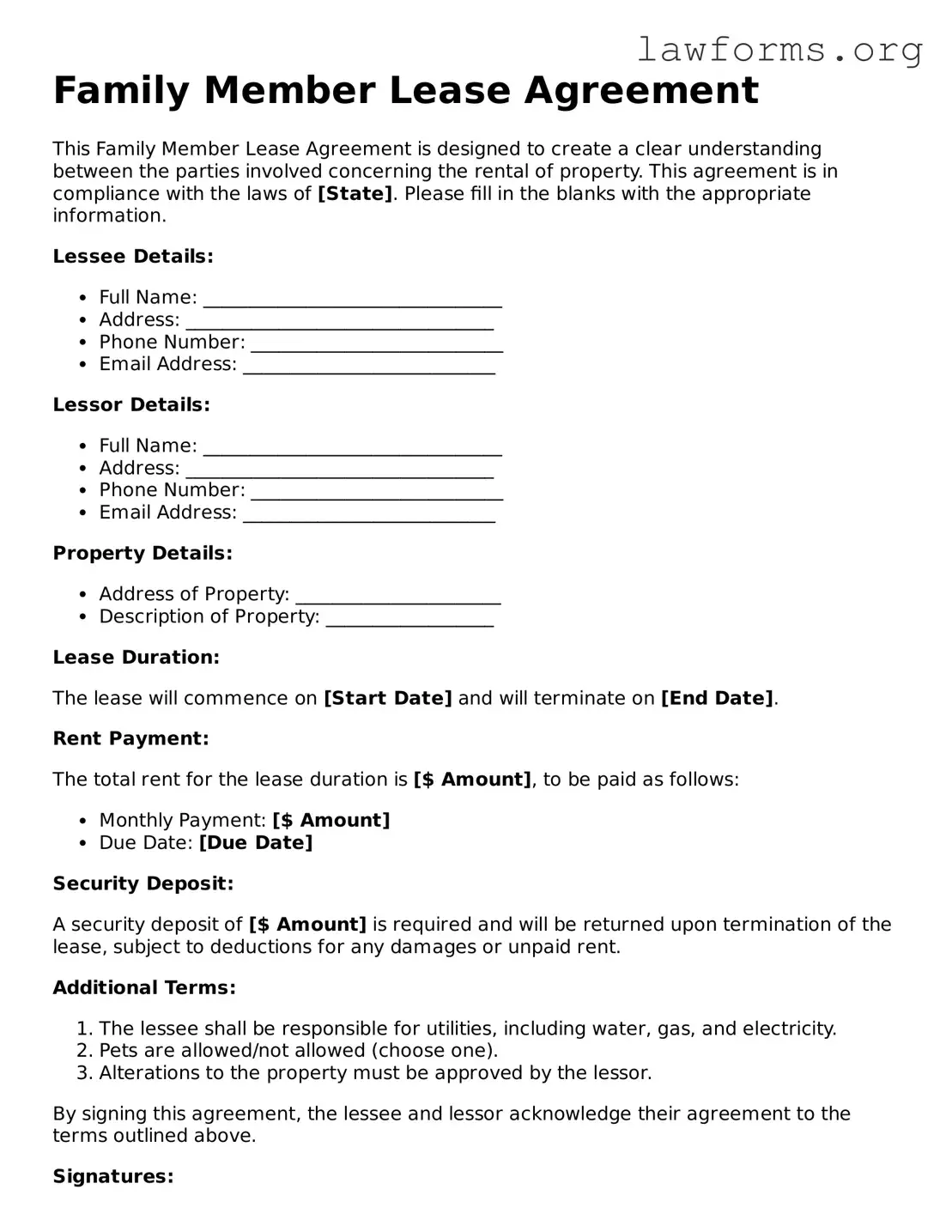Family Member Lease Agreement
This Family Member Lease Agreement is designed to create a clear understanding between the parties involved concerning the rental of property. This agreement is in compliance with the laws of [State]. Please fill in the blanks with the appropriate information.
Lessee Details:
- Full Name: ________________________________
- Address: _________________________________
- Phone Number: ___________________________
- Email Address: ___________________________
Lessor Details:
- Full Name: ________________________________
- Address: _________________________________
- Phone Number: ___________________________
- Email Address: ___________________________
Property Details:
- Address of Property: ______________________
- Description of Property: __________________
Lease Duration:
The lease will commence on [Start Date] and will terminate on [End Date].
Rent Payment:
The total rent for the lease duration is [$ Amount], to be paid as follows:
- Monthly Payment: [$ Amount]
- Due Date: [Due Date]
Security Deposit:
A security deposit of [$ Amount] is required and will be returned upon termination of the lease, subject to deductions for any damages or unpaid rent.
Additional Terms:
- The lessee shall be responsible for utilities, including water, gas, and electricity.
- Pets are allowed/not allowed (choose one).
- Alterations to the property must be approved by the lessor.
By signing this agreement, the lessee and lessor acknowledge their agreement to the terms outlined above.
Signatures:
Lessee Signature: ________________________ Date: _______________
Lessor Signature: ________________________ Date: _______________
This agreement may be modified only in writing and signed by both parties. Refer to relevant state laws for additional regulations.
